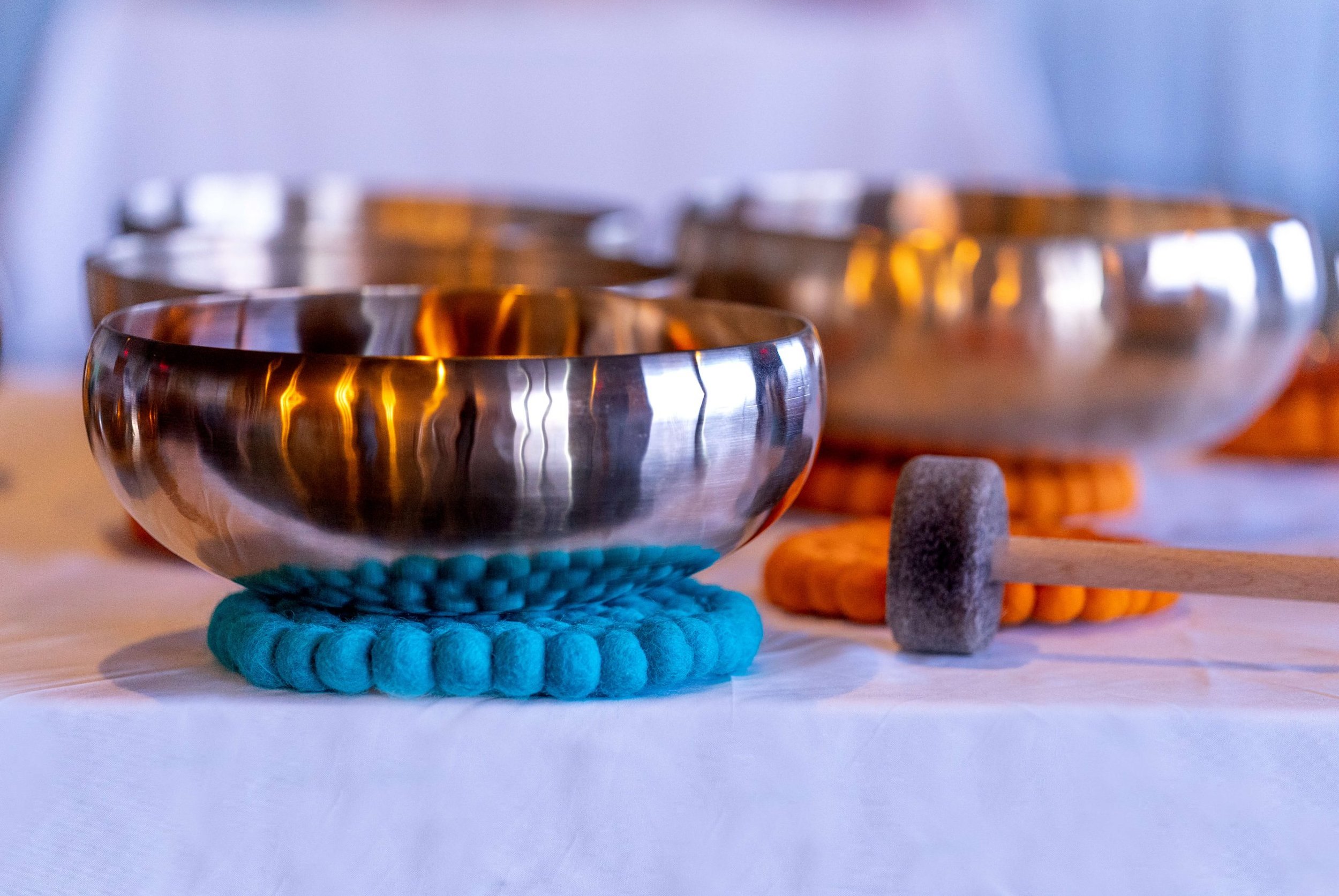
Singing Bowls
Bowl Information
Peter Hess® Therapy Singing Bowl
The Peter Hess® Therapy Singing Bowl with all its vibration and sound features was specially designed for sound massage. The frequency range and vibration characteristics of the singing bowl required for the corresponding parts of the body are of particular importance. The sound of the singing bowl is harmonic and without any frequency jumping or ambient noises, as well as free from unpleasant secondary tones (e.g. high demanding sounds).
The sound spectrum is very rich in overtones and flexible in reaction. Ancient knowledge of manufacture and the material composition provide the basis for construction and production. The most important parameter for optimizing our products is the intensive work with singing bowls and with Peter Hess sound massage. Research, knowledge and good development work are factors continuously incorporated in our production processes.
Forged
The alloy is produced according to ancient recipes. It is first cast as a thick slice then forged into a singing bowl in a glowing state and in a perfect rhythm by four to five craftsmen. Depending on the size of the singing bowl, it is heated around 20 to 90 times. Due to the multiple glowing and cooling processes the singing bowl gets a particularly good sound. Last refinements to the singing bowl are achieved by certain forging techniques. The singing bowl is cleaned by hand and so obtains its glossy surface.
The Alloy
Our Singing Bowls - An Alloy of 12 Metals
Vibration quality and the sound of a bowl are mainly determined by high-quality bronze (copper and tin). Moreover, ten metals in homeopathic potencies are added to the singing bowls. This process reminds of ancient knowledge.
Planet Metals
*In homeopathic potencies
GOLD - Sun
SILVER - Moon
QUICKSILVER* - Mercury
COPPER - Venus
IRON - Mars
LEAD* - Saturn
TIN - Jupiter
Zinc - efficient against states of stress
Meteor Iron - supports energy and activity
Bismuth - supports the digestive system
Galena - against arthritis
Pyrite - for strengthening the lung
Quality
Peter Hess® Therapy Singing Bowls are of a quality that is unique to the market. This singing bowl is based on the experiences made through Peter Hess sound massage since 1984 and applied to the development of the singing bowls. In our workshops, production is controlled by corresponding experts, including an experienced metal engineer. Consequent control processes guarantee compliance with our high quality demands.
What makes our singing bowl so valuable?
Applying pure materials, We exclusively apply pure, high-quality metals, no metals of waste products or scrap.
High contents of tin: Tin is a very expensive raw material, our singing bowls feature high contents of tin. Many other manufacturers frequently reduce the content of tin or replace it by lead (solder), because the price of tin is eight to ten times higher than lead.
Complex forging technique: Our singing bowls are forged from a casted green body and not produced from rolled sheet. Compared to rational production, this means an additional working effort of 30 per cent. Based on the forging technique applied by us, the singing bowl vibrates substantially longer and more consistently. Singing bowls produced from rolled sheet by far do not achieve this sound quality.
High quality standard: From 1000 kg high-quality bronze, about 320 kg Peter Hess® quality singing bowls are made. Amongst others, the reason for this is that we already take singing bowls out of the production process if they do no longer comply with our quality requirements. These singing bowls are melted again then, leading to a loss in material (e.g. because of evaporation of the metals). During “fine-tuning“ of the singing bowl, fine metal fillings are taken from the bowl which can only be reused under heavy losses (caused by evaporation during melting).
Good working conditions and a fair salary for our workers: We care for good working conditions at fair conditions, control that child labor is excluded in our production facilities and provide for regular working hours. Moreover, our workers receive our financial support in the event of illness and ritual festivals within the family or in the religious society.
Strong quality controls: Despite a careful preselection in Nepal and India already, some of the singing bowls produced do not comply with our requirements yet for obtaining the quality seal Peter Hess® Therapy Singing Bowl – professional therapeutic quality. All singing bowls are investigated in Germany with regard to their quality and are classified into quality levels then. All singing bowl sets are individually assorted in Germany. Sometimes we are asked why our singing bowls are not such low-priced as some of those having been acquired e.g. on the occasion of a Christmas market or trade fairs. Comparing them, you will find that our singing bowls, considering the quality features mentioned above, are even particularly favorable in price. Comparing prices, the quality is always important to us. However, it is market standard to determine the price of the singing bowl based on the weight and not on quality.
Bowl Care
Singing bowls consist of different metals and, therefore, form galvanic elements, that is, a tension is formed between two different metals. Corrosion is facilitated if the metals come in contact with liquids containing salts or acids. For example, if a singing bowl is exposed to sea water and not cleaned afterwards, you will see its copper parts surfacing after some time. This is visible as red-brown spots. Singing bowls should be protected against salty and acid liquids. After manufacturing in Nepal and India, our singing bowls are cleaned and, for protection, a fine coating of mustard oil is applied. Thereafter, they are only handled with gloves.
Singing Bowls in Nepal
In Nepal, singing bowls are cleaned with rice straw ashes. The ashes are mixed with mustard oil and the singing bowl is cleaned by rubbing with this blend. This makes for a clean surface.
This, too, is a way to verify the genuineness of very old singing bowls: if they have been cleaned this way for decades or even centuries, the imprints of the forging hammers have been softened by thousand fold cleaning. Even the sound becomes more “round”, soft and harmonic. This is how it can be discerned whether a singing bowl is truly old or has been aged artificially.
In Europe there is normally no special protection needed for the singing bowl. But if you wish to protect your singing bowl and the Nepalese way feels too laborious, you can use a mild, scratch-free brass polish. If the bowl is heavily stained, try the following:
Mix one cup (150-200ml) cheap vinegar with four to five tablespoons salt and let this blend soak the surface of the bowl for three to five minutes. This provokes a galvanic reaction. Afterwards, the surface has to be thoroughly rinsed with water to remove all salt and acid. Then rub the bowl with a soft cloth and cover very thinly with beeswax or olive oil. This coating should be rubbed in in a way that leaves no traces when the singing bowl is put on, for example, your client’s clothes. A mild brass polish does equally well, but it should be a scratch-free product!
The color of the singing bowl will change over time, depending on how often it is cleaned. If you wish to maintain the golden shine, you should clean it regularly about every two months. Of course it is a question of taste if you like some patina on your bowls. The cleaning usually does not affect the sound of the singing bowl. Only if you clean your singing bowl regularly in the Nepalese way, will its sound become more “round”, soft and harmonious.







